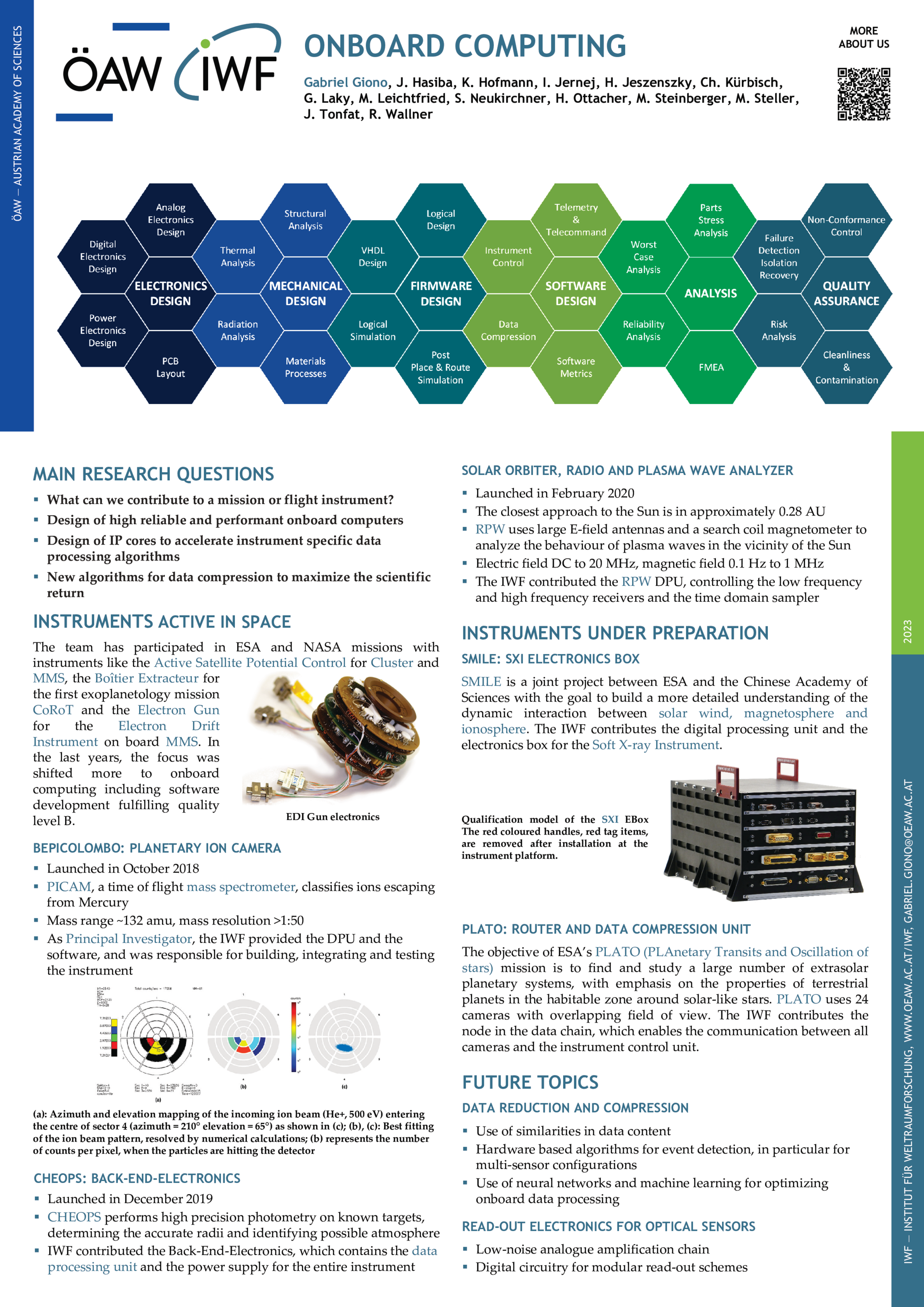Onboard Computing

Since the 80s, IWF has participated with 102 flight instruments in 38 international space missions. Instruments aboard spacecraft are exposed to harsh environments, e.g., vacuum, large temperature ranges, radiation, and high mechanical loads during launch. Furthermore, these instruments are expected to be highly reliable, providing full functionality over the entire mission time, which could last for more than a decade.
Beside building magnetometers, the focus in the development of flight instruments lies on on-board computers. Devices for satellite potential control have also played a significant role in the group's work. The first so-called active spacecraft potential control (ASPOC) was used for Interball in 1995, the most recent of which is currently being successfully used aboard NASA's MMS satellites.
Examples of recent past are the central data processing unit for CHEOPS and the DPU electronics for the wave experiment of Solar Orbiter. Furthermore, the ion camera for the mass spectrometer aboard BepiColombo was launched in 2018 and is now on its way to planet Mercury.
